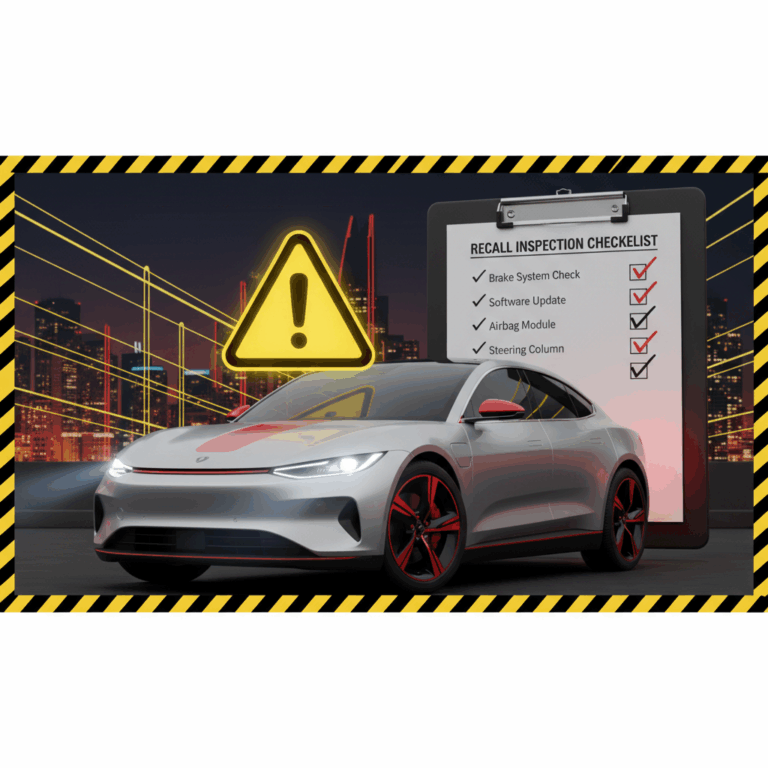Definition and purpose of recalls
The recalls These are procedures that alert about defects in vehicles that may affect the safety of users and third parties.
These alerts allow owners to correct faults free of charge, ensuring that vehicles meet basic road safety standards.
The main objective is to prevent risks, avoiding accidents and protecting the safety of drivers, passengers, and pedestrians through timely repairs.
What are recalls?
Recalls are notifications issued by manufacturers or authorities when a defect is detected in a vehicle that could compromise its safety.
This process includes inviting owners to take their vehicles to authorized repair shops for repair or replacement of the affected component.
Generally, this action is performed at no cost to the user, seeking to minimize risks associated with the detected defect.
Main objective in road safety
The main purpose of recalls is avoid accidents caused by technical failures or deficiencies in the vehicles.
They ensure that vehicles remain safe for all road users, including pedestrians and other drivers.
In addition, they help preserve vehicle value and reduce the likelihood of incidents related to faulty critical components.
Process and notification of recalls
The process begins with the problem detection, which may arise from complaints, official inspections or internal analyses by manufacturers.
Once the defect has been identified, both the competent authorities and the affected owners are notified to ensure road safety.
This communication is essential for users to take their vehicles in for necessary repairs and avoid major risks.
Problem detection and origin
Problems can be detected through internal reviews, consumer reports, and regulatory assessments that reveal security flaws.
The cause may be a manufacturing, design, or material defect, which puts the safety of the vehicle and its occupants at risk.
This early detection allows for quick action to minimize the impact and prevent accidents or further damage.
Communication to authorities and owners
Upon confirming a defect, the manufacturer informs the authorities, who oversee and authorize the official issuance of the recall.
At the same time, owners receive direct notifications by mail, email, or official means requesting action.
This clear and timely communication is key to ensuring that users do not ignore the recommendation and go to authorized centers.
Solution options and repairs
Solutions range from software updates and replacement of defective parts to mechanical repairs depending on the severity of the problem.
In extreme cases, the manufacturer may offer to buy back the vehicle to avoid any ongoing risk to the user.
These repairs are performed at no cost to the owner and are guaranteed to meet safety requirements.
Importance of attention to recalls
Attend a recall It is essential to ensure the safety of occupants and prevent possible accidents caused by technical defects.
Ignoring these warnings can increase the risk of serious vehicle failure, endangering not only the driver but also others on the road.
In addition, timely care protects the owner's investment and ensures the vehicle maintains its resale value.
Risks of ignoring a recall
Ignoring a recall significantly increases the risk of accidents due to uncorrected faults in critical vehicle systems.
Defects can affect brakes, steering, or airbags, causing dangerous situations for the driver, passengers, and other road users.
Likewise, a history of outstanding recalls can make it difficult to sell or transfer a vehicle, affecting its value and credibility.
Critical components involved
Recalls often involve critical components such as airbags, braking systems, steering, and powertrain, whose failure can be fatal.
Electrical and electronic systems are also considered, which, if defective, could compromise the safe functionality of the vehicle.
Immediate inspection and repair of these elements is vital to maintaining structural integrity and protecting occupants.
Technology and safety in modern vehicles
With technological advancement, modern vehicles integrate digital systems that require updated maintenance to preserve their security.
The software updates and security patches are essential to correct flaws and protect electronic systems from emerging vulnerabilities.
These measures ensure the vehicle operates properly and reduce risks associated with both mechanical problems and cyberattacks.
Software updates and security patches
Updates allow for corrections to errors detected after the vehicle's manufacture, optimizing functions and improving the user experience.
In addition, they facilitate the inclusion of new features and strengthen protection against threats that could compromise the integrity of the system.
Manufacturers submit these patches remotely or through authorized repair shops as part of recalls.
This makes digital maintenance as vital as physical maintenance to prevent failures and ensure road safety.
Cyber Threat Prevention
Connected vehicles are exposed to cyber risks, so implementing barriers to prevent unauthorized access is crucial.
Recalls incorporate security measures to update systems and mitigate vulnerabilities detected by manufacturers or experts.
This preventive approach protects both the integrity of the vehicle and the privacy and safety of users while driving.
Interesting fact about cybersecurity in cars
In 2023, multiple vulnerabilities that allowed remote control of vehicles were reported, accelerating the development of emergency patches.
This demonstrates the importance of keeping systems up-to-date and responding quickly to recalls to prevent attacks.







